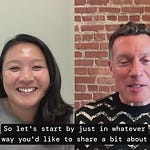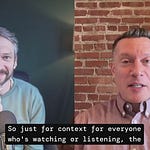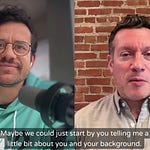When Brian Klein joined the community team at Coda (now part of Grammarly), he brought with him a clear sense of purpose: to create a space where power users didn’t just get support—they shaped the future of the product.
As a community leader with a background in marketing and user engagement, Brian helped turn Coda’s passionate users into collaborators. He championed a program that wasn’t about broadcasting—it was about listening, adapting, and inviting users to help build something bigger than themselves. From surfacing key product feedback to designing creative incentives and events, Brian made community feel less like a strategy and more like a shared identity.
In this episode of Community Codebreakers, we talk about what it really takes to make users feel seen, how Coda used qualitative signals to drive decisions, and why sometimes the best metric is whether people feel proud to wear your logo on a t-shirt.
This is the final interview in our three-part series with Coda/Grammarly’s community leaders (check out part 1 and part 2, if you missed them). It’s a great case study in how community strategy, marketing, and product development can work in sync—and what can happen when they do.
From identity to input: how Coda’s community became a flywheel
In our conversation, Brian broke down the community strategy at Coda into something refreshingly simple: shared purpose, ongoing input, and real recognition. The team didn’t treat community members like superfans—they treated them like teammates. And that approach paid off.
Coda’s community was designed with intention: structured around champions and advocates, with a focus on amplifying user needs and creating touchpoints that connected back to the product. Brian emphasized the importance of asking good questions (not just posting announcements), gathering feedback early, and making sure community signals were actually used to shape strategy.
From swag and surprise rewards to community-led events and internal stakeholder alignment, every part of the program was built around connection—with the product, with the team, and with each other.
Key Takeaways
Community shouldn’t be passive. At Coda, it was used to gather meaningful input, validate product direction, and highlight unmet needs—before they became support tickets.
Identity matters. Brian found that small physical markers, like custom t-shirts or insider perks, created a powerful sense of belonging among core users.
Your best feedback might come from detractors. Listening to critical voices in the community helped Coda identify friction points early and turn skeptics into partners.
Qualitative metrics are your secret weapon. Instead of chasing vanity stats, Brian focused on narratives and examples that demonstrated real community impact.
Aligning internally is just as important as engaging externally. Keeping product and support teams in the loop helped ensure community insights actually influenced the roadmap.
Decoded Insight
Community isn’t just a mirror—it’s a megaphone. If you want your product to resonate, build with your champions, not just for them.
Want to connect with Brian?
Reach out to him on LinkedIn. And if this interview sparked ideas or questions, leave a comment or share the post with someone who’d find it useful.
Timestamps
00:00 – Introduction to Community and Background
02:53 – Defining Community and Shared Identity
06:03 – The Purpose of Community at Coda
09:05 – Community Structure and Internal Dynamics
11:58 – Gathering Insights for Community Evolution
14:58 – Initial Engagement Activities and Events
17:57 – Communication and Transparency in Community
21:09 – Recruitment and Outreach Strategies
24:34 – Building Community Engagement
27:59 – Qualitative vs Quantitative Metrics
30:55 – Feedback and Adaptation
33:57 – Future Aspirations for Community
35:42 – Overcoming Challenges in Community Management
39:49 – The Value of Listening to Detractors
42:10 – Purpose Behind Community Building










